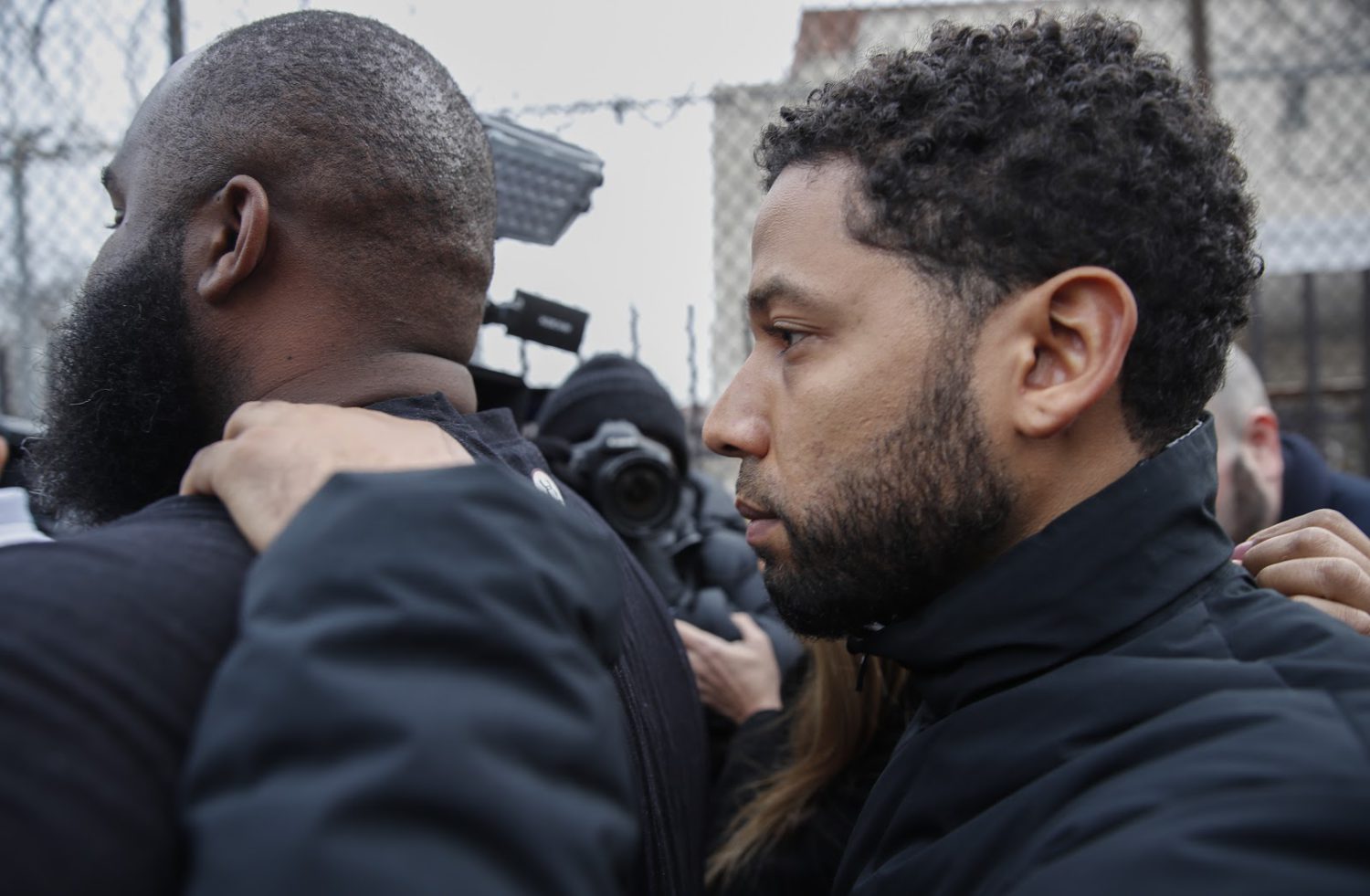A week of introspection for the media
It has been another eventful, controversial and tumultuous week in journalism. At the center of it: race. More specifically, how the media covers race.
The latest testing ground came in the Jussie Smollett story, which has left us wondering: How did the media do?
The fact that Smollett is black and gay made the story complicated, especially because the “Empire” actor said he was the target of an attack because he was black and gay. Journalists are trained to be skeptical and allow the facts to dictate where a story goes. In this case, however, it seemed more cynical than skeptical to question or doubt Smollett’s story. The police originally viewed Smollett’s claims as credible and the attack sounded so horrific and disgusting that it felt shameful to distrust Smollett. Plus, who would make up such a thing?
Turns out, Smollett, apparently. Police arrested Smollett on Thursday for staging the attack. But back to the original question: How did the media do?
Any time a story veers from its expected trajectory, there’s a common and totally fair question from critics of the media: Are you going to cover the real story now with as much attention and vigor as you covered the original wrong story?
[expander_maker id=”1″ more=”Read more” less=”Read less”]
The answer in this case is a resounding yes. A data analysis by The Washington Post discovered that the major broadcast and cable news networks all spent significantly more time covering the Smollett story after rumors surfaced that it might have been hoax than they did when the allegations were first made. In addition, the Post reports that data compiled by GDELT showed that there was “more coverage in online news articles after Smollett’s story was undermined than when he first made his claim.”
This is all to suggest that, at least in this instance, the media (minus a few exceptions) handled this story responsibly and thoroughly, allowing the facts to dictate the narrative and pursuing the story where it led.
This story, however, has not reached its end. What follows now is how the media reacts to the news that Smollett allegedly made up the whole thing. At the center of that reaction is more conversation about race and sexual orientation and the damage that has been done to real victims — past, present and particularly, future.
Because Smollett’s hoax introduced a President Donald Trump element by saying his attackers yelled, “This is MAGA country,” supporters of Trump feel they’ve been labeled unfairly.
The Smollett story still has many chapters left. How the media covers race, sexual identity, bigotry and all their political ramifications will continue to be a critically important topic.
Crossing the line
This is not a good look for Stephanie Ruhle. For years, the MSNBC host and NBC News correspondent reported on and endorsed Under Armour sports/casual apparel on the air and Twitter. The problem? She never publicly disclosed that she was advising the company and CEO Kevin Plank. According to the Wall Street Journal, Ruhle and Plank had “close ties,” with Ruhle traveling on Plank’s private jet and advising him on business matters.
One glaring example of Ruhle’s actions: in 2016 when Under Armour released the much-criticized Steph Curry shoe, employees of the company were told not to address criticism because Ruhle “would step in and discuss the shoes on TV.”
And she did. Ruhle said on a weekend version of “Today:” “I really like this shoe.”
She also held up the shoe and said: “This, just in time for Father’s Day, dads!” She later said she was going to buy a pair for her father.
That’s just one example. Alex Griswold of the Washington Free Beacon also found several other Ruhle tweets about Under Armour over the years, with Ruhle writing things such as “They are the best” and “WOW!” and “It’s not just the athletes stepping in & standing up for free speech … now comes the brands. Thank you @UnderArmour.”
According to the WSJ, Under Armour employees found the relationship between Ruhle and Plank as “problematic.” Under Armour’s board questioned Plank about it, but it’s Ruhle who has crossed the line. No reporter should have business ties with a company he or she reports about or comments on. Working with and advising a company and then reporting on that company without disclosing that relationship is a fireable offense.
NBC refused comment on the Wall Street Journal report.
Local shoutouts
For this item, let me turn it over to Poynter.org managing editor Barbara Allen:
Each week, we walk the earth like Caine in “Kung Fu,” searching for the best in local journalism. This week features an important investigation out of South Carolina; a textbook feature on an unlikely pair: a heart transplant recipient and the donor’s mom; an in-depth look at a local artisan’s skill gone national; and can’t-miss news about a beloved cat’s passing. And if you see something great we should feature in an upcoming roundup, let us hear from you at news@poynter.org.
Changes at Toledo Blade
Starting next week, the Toledo Blade will no longer publish print editions on Mondays and Tuesdays. But the Blade will continue to produce eBlade, a daily digital broadsheet newspaper, seven days a week. This obviously saves money, but the Blade is pitching this as a step into the future and a way to attract younger readers.
Allan Block, chairman of Block Communications Inc., parent company of the Blade, told the paper, “It is a marketplace decision indicative of the preferences of younger age groups. Does anyone know a person under 30 who reads the printed newspaper?”
The Blade knows this move will not go over well with some readers.
“Change is hard, but we have to do this,” Block said. “I do not apologize for giving readers something that is superior. I do not apologize for taking readers to the future.”
Sportswriter dies at spring training
Nick Cafardo, who covered the Boston Red Sox as a columnist and beat reporter for the Boston Globe and, before that, the Patriot Ledger, died Thursday. He was 62.
According to the Globe, Cafardo was in Fort Myers, Florida, covering spring training for the Globe when he suffered an embolism. The Red Sox medical team was unable to revive him. When I was a sportswriter, we crossed paths a few times at the ballpark. He was a good reporter and an even better person.
Check it out
Legendary actor John Wayne’s 1971 Playboy interview is in the news because it’s full of inappropriate comments. The Washington Post’s Eli Rosenberg has the details.
The Oscars are Sunday night. The Ringer’s Sean Fennessey has predictions and observations.
Ever notice how all new apartment buildings look the same? Justin Fox from Bloomberg Businessweek tells you why.
Upcoming Poynter training:
- Poynter Producer Project. Deadline: Feb. 22.
- ACES In-Depth Editing (Online Group Seminar). Begins March 1.
Want to get this briefing in your inbox? Sign up here.
Follow us on Twitter and on Facebook.
[/expander_maker]








